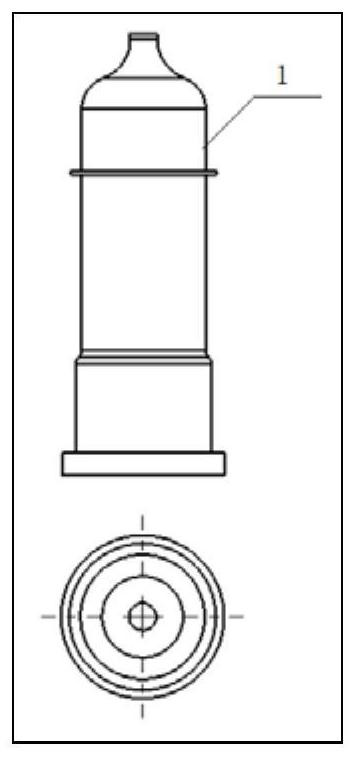A Compound Ion Source Bipolar Linear Ion Trap Mass Analyzer
A linear ion trap and analyzer technology, applied in the field of chemical measurement, can solve the problems of no soft ionization, hard ionization and bipolar detection, inability to respond to detailed information in real time, and difficulty in electrode processing, etc. The effect of low processing requirements and improved detection sensitivity
- Summary
- Abstract
- Description
- Claims
- Application Information
AI Technical Summary
Problems solved by technology
Method used
Image
Examples
Embodiment 1
[0039] see figure 1 , a compound ion source bipolar linear ion trap analyzer, consists of a UV lamp ion source 1, an ion repelling electrode 2, a focusing electrode 3, a guiding electrode 4, a front cover electrode 5, two Trap fixing seats 6, 6', two electron multipliers 7, an ion trap analyzer 8, a rear end cover electrode 9, an EI filament ion source 10 and two electron multiplier shielding seats 11. The center of the front end cover electrode 5 and the rear end cover electrode 9 are respectively provided with an ion entrance and exit hole, which are respectively an ion entrance hole 17 and a hard ionization entrance hole 29. 2. The focusing electrode 3 and the guiding electrode 4 constitute the ion transmission part, and the first trap fixing seat 6 is located between the front cover electrode 5 and the ion trap analyzer 8, and is used for fixing the front cover electrode 5 and the ion trap analyzer 8 , the second trap fixing seat 6' is located between the ion trap analyze...
Embodiment 2
[0049] Embodiment 2 Working process of the present invention
[0050] Soft ionization mode: After the detection sample is preliminarily separated by the chromatographic or liquid phase 32, it enters the sample introduction port 14 through the soft ionization sample channel 33, and after the photons are generated by the ultraviolet lamp ion source 1, they enter the ionization area 13 from the photon incident hole 12 and dissipate this area. Soft ionization of the inner sample. The instrument work is divided into 4 stages: ion introduction, ion cooling, mass analysis and ion emptying. In the ion introduction stage, the ion beam softly ionized by the ultraviolet lamp ion source 1 is focused and transported by the ion repeller electrode 2 , focusing electrode 3 , and guide electrode 4 , and enters the ion trap analyzer through the ion entrance hole 17 . At this time, the radio frequency voltage signal loaded on the ion trap analyzer remains unchanged, and the ions entering the io...
Embodiment 3
[0054] refer to Figure 13 , Compound ion source bipolar linear ion trap analyzer works with chromatography or liquid phase: 32-chromatography or liquid phase, 33-soft ionization sample channel, 34-hard ionization sample channel. Chromatography or liquid phase has extremely strong separation ability, and bipolar linear ion trap has unique identification ability for unknown substances, and its sensitivity is extremely high. Therefore, the compound ion source bipolar linear ion trap analyzer and chromatography or liquid Hyphenation is one of the powerful tools for separating and detecting complex compounds. When the multi-component mixed sample enters the chromatographic or liquid phase 32, use the principle that the adsorbents in the chromatographic or liquid phase 32 have different adsorption forces for each component to initially separate the components in the test sample, and then sequentially The soft ionization sample channel 33 enters the ultraviolet lamp ion source 1 or...
PUM
 Login to View More
Login to View More Abstract
Description
Claims
Application Information
 Login to View More
Login to View More - R&D
- Intellectual Property
- Life Sciences
- Materials
- Tech Scout
- Unparalleled Data Quality
- Higher Quality Content
- 60% Fewer Hallucinations
Browse by: Latest US Patents, China's latest patents, Technical Efficacy Thesaurus, Application Domain, Technology Topic, Popular Technical Reports.
© 2025 PatSnap. All rights reserved.Legal|Privacy policy|Modern Slavery Act Transparency Statement|Sitemap|About US| Contact US: help@patsnap.com



